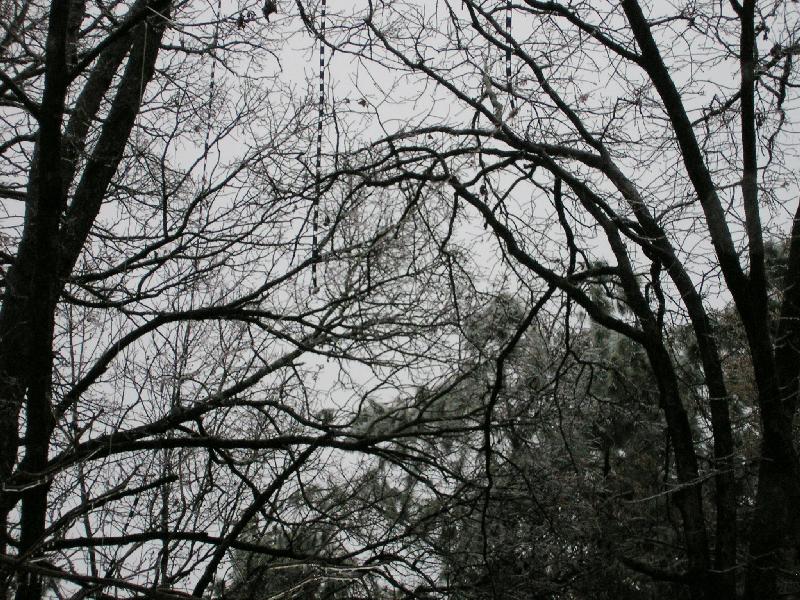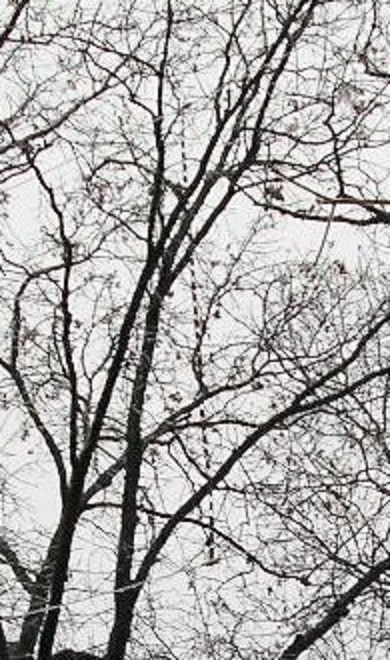| |
When I lived in Stone Mountain GA the first antenna was a 160M full-wave loop. Using balanced tuners it worked
FB from 160M to 2M. After researching directional wire antennas the decision was made to try a Sterba curtain.
A Sterba curtain is an array a phased array of dipoles. Theory and construction details can be found bu using
your favorite search engine. These notes are more about practical application benefits and drawbacks.
|
|
| |
The decision of what band to build the curtain for was not difficult. The biggest drawback to a Sterba curtain
is its size requirements. The vertical phasing lines are 1/2 wave-length long. Each dipole pair requires 1/2
wave-length of horizontal length. A six dipole curtain for 20M would be ~33 feet high and ~100 feet long. The
lower elements' height above ground should be a minimum of .7 wave-lengths or ~23 feet. Ten meters and its ~17
foot 1/2 wave-length would be more practical for my situation.
|
|
| |
As it turned out there were two trees near the house between which a 6 dipole 10M curtain would fit nicely.
The antenna went together quickly and worked FB. Window line was used for the feed line and phasing lines. Number
14 THHN wire was used for the dipoles. A commercial balanced tuner was used to match the antenna to the rig.
|
|
| |
Within six months of building the 10M curtain an FT-897D was purchased relegating the FT-757GX II to backup duty.
The new rig was the first I ever owned with VHF capabilities. The commercial balanced tuner tuned both the 160M
loop and 10M curtain to a reasonable match. It was about this time when the decision was made to replace the
10M curtain with a 6M version.
|
|
| |
The 6M curtain was built using the same material as the 10M version. A ten dipole array fit nicely in the
newly vacated space. Six meters quickly became my second favorite band just behind 160M. There are two drawbacks
to a 6M curtain. One is when it's raining, don't bother as a match won't be found. The other plagues all fixed
directional antennas, they're fixed. The ideal solution would be a second curtain hung perpendicular to the plane
of the first curtain. The best I could do was about 120° which is close enough. The second curtain was built
as a twelve dipole array.
|
|
| |
For instant direction switching a second balanced tuner would be needed. Component values for 6M and 2M balanced
tuners were found IIRC in an early 60s ARRL handbook. Balanced tuners were built for both bands. As a side note the
2M unit was used to match the 160M loop. A couple of simplex QSOs were made to prove it worked. The other operators
had difficulty imagining a 550 foot long 2M antenna.
|
|
| |
Being able to switch directions instantly was a big plus. Another benefit was using the 'wrong' antenna as an
rx antenna to reduce QRN. Several hams came by to see the antennas even though I told them the antennas
are mostly air. The horizontal sections disappear when the antenna is in the air. The images below were taken after
an ice storm. A thick coating of ice makes the antenna easier to see.
|
|
| |



|
|
| |
My experiment with Sterba curtains was successful. At this QTH I'd use a pair for 6M but this summer a PVC parasol
tribander (15, 10, 6) will be built. The essence of that antenna is three 2 element wire beams supported by a PVC
frame. I've built several PVC parasols in the past and will document the construction of the new one.
|
|